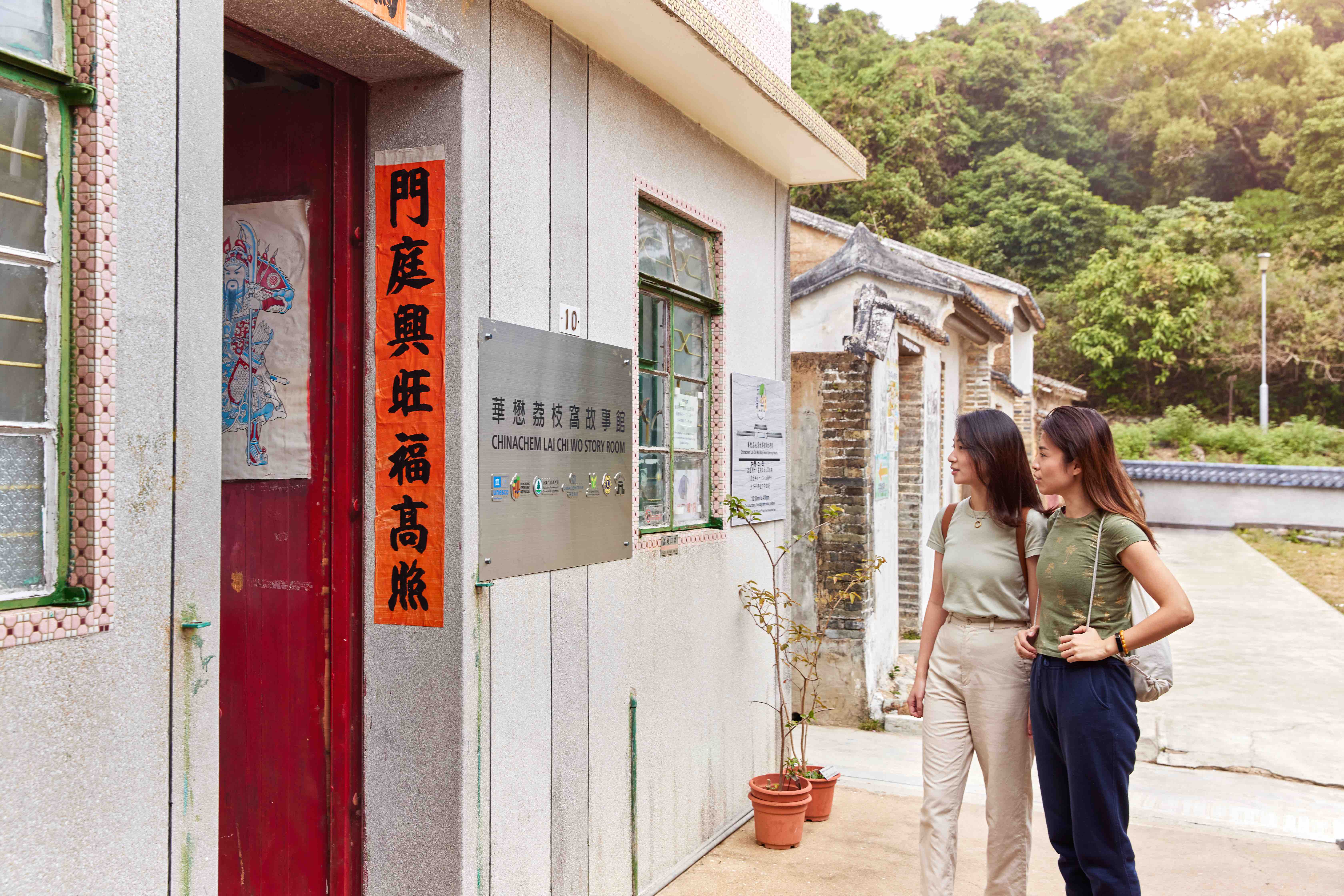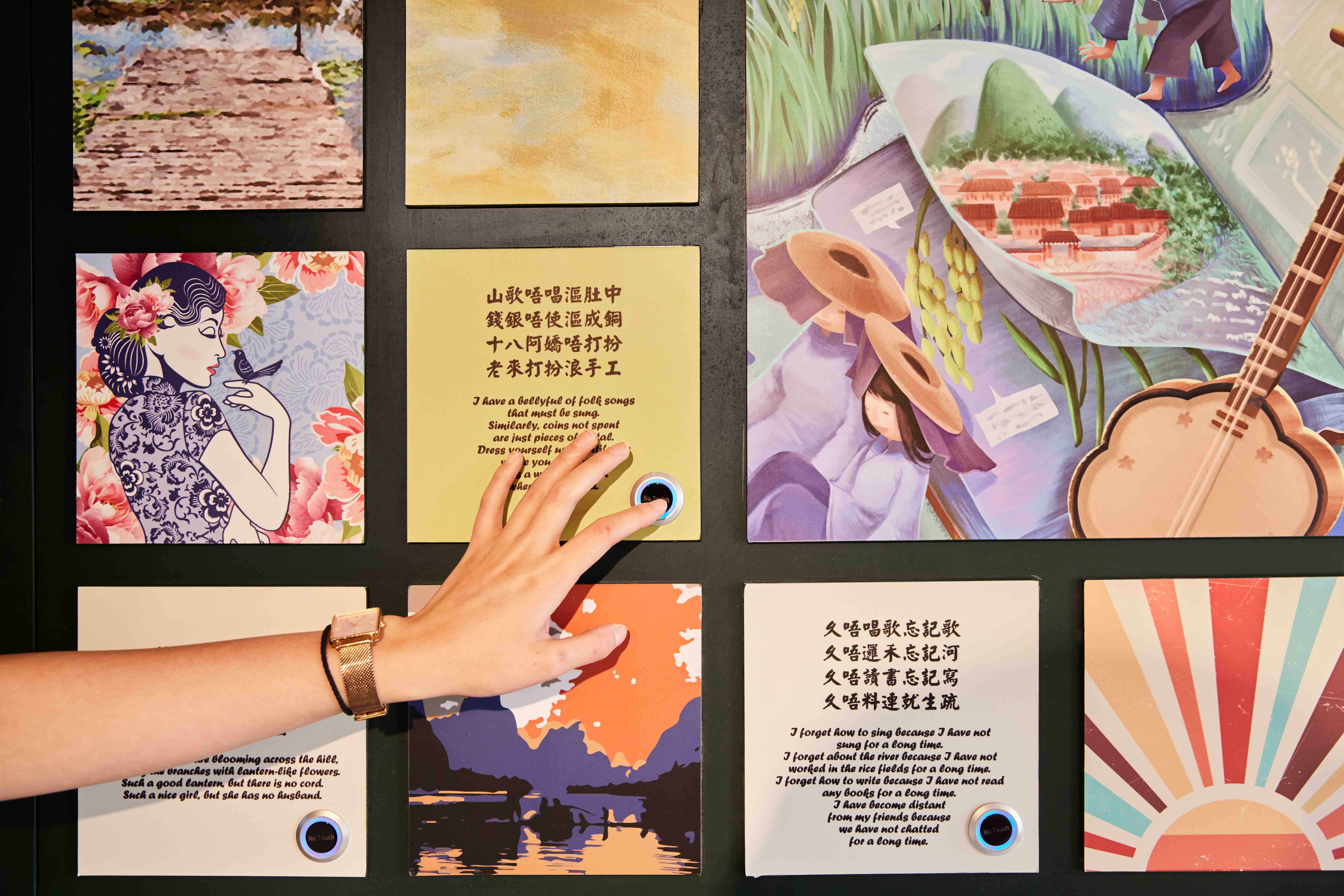Disclaimer: This is a feature story and does not represent the Group's position.
07 February 2023
The Hong Kong movie “Far Far Away” (緣路山旮旯) brought Lai Chi Wo (荔枝窩) to the big screen, making this ancient Hakka village popular again. When you go to Lai Chi Wo, you can enjoy the UNESCO-designated geological park and learn about the region's Hakka culture, which has a more than 300-year history. The Hakka people think that without the Hakka dialect, there would be no Hakka people. To understand Hakka culture, you can start with the "sound" and become familiar with its Hakka dialect and folk songs.
As one of the ten most difficult dialects to learn and understand, it is not easy to master Hakka, and it is not easy to figure out the branches of Hakka that are as numerous as stars. The Hakka dialect is spoken in many different places, and Mainland China, Taiwan and foreign territories like Malaysia all have their own classification systems for it. The "Chinese Language Atlas," published in 2012, states that Hakka in China is divided into eight major regions, including: Cantonese and Taiwanese parts, Northern Guangdong part, Hǎilù part, Western Cantonese part, Tīng Zhōu part, Yú Xìn part, Ninglong part and Tóng Guì part.
As one of the ten most difficult dialects to learn and understand, it is not easy to master Hakka, and it is not easy to figure out the branches of Hakka that are as numerous as stars. The Hakka dialect is spoken in many different places, and Mainland China, Taiwan and foreign territories like Malaysia all have their own classification systems for it. The "Chinese Language Atlas," published in 2012, states that Hakka in China is divided into eight major regions, including: Cantonese and Taiwanese parts, Northern Guangdong part, Hǎilù part, Western Cantonese part, Tīng Zhōu part, Yú Xìn part, Ninglong part and Tóng Guì part.

Although the academic classifications for Hong Kong Hakka are Cantonese and Taiwanese, it is preferable to refer to it as a dialect. I am a Hakka person (Ngài he Hak-kâ-ngìn), I love you (ngái o`i ngi)". The Hakka dialect of southwestern Guangdong Province is known as the "𠊎" dialect because it frequently uses the first person pronoun "𠊎" (pronounced "ngái"). However, it can alternatively be written as "Yahua", "Aihua" and so on. In the future, you should understand what is meant when someone says, "You will not die, 𠊎 die."
Early in the Qing Dynasty, the local Hakka people arrived in Hong Kong from provinces like Guangdong, Jiangxi and Fujian. All of the new immigrants who were farmers were registered as Hakka people or local Hakka people in their household registration. These Hakka individuals created villages in the New Territories, taught Hakka in private schools, and also helped to spread the Hakka language in Hong Kong. Historically, Hong Kong's primary language was Hakka. At its peak, Hakka was spoken by more than 50% of Hong Kong's residents.
In the "City Hero " (飛虎奇兵) sequence, Xia Wenxi (夏文汐) playing Li Xiangqin (李香琴) told her in Hakka not to date Zheng Haonan (鄭浩南). When drafting the script for "Gangland Odyssey," (義膽雄心) Chen Huimin (陳惠敏) briefly left Hong Kong to bid Cheng Kui'an (成奎安) farewell. They both spoke Hakka, revealing that the dialect was still widely used in society at the time.
Mastering Hakka folk songs (Hak-kâ sân-kô), which are a fundamental part of Hakka culture, is a must if one wants to understand the Hakka dialect. As the name implies, they are a particular category of folk songs that are particularly well liked by the Hakka community in Guangdong, Fujian, Jiangxi, Taiwan and other locations. Because of the legacy of the Book of Songs, Hakka folk songs were regarded as the sound of nature in the era when there were no Cantonese pop songs. They have been around since the Tang Dynasty and are found mainly in Meizhou and other Hakka communities.
It is important to note that the popularity of folk music in the Hakka region can be attributed to the Hakka people's predominant distribution in the hilly regions of south-east China. Since ancient times, Hakka men and women have laboured in the mountains and fields. They developed the appealing Langlang melody through the course of their sustained hard work.
These three general categories can be used to classify Hakka folk songs:
- Self-narcissism or self-venting; there may not be any interactive partner when singing
- Flirting between men and women, which is the main part of Hakka folk songs;
- A banterous ballad, where a man and a woman sing a folk song to each other in a playful manner and the other party will sing a folk song back if there is a reaction, teasing or flirting with each other.
Early in the Qing Dynasty, the local Hakka people arrived in Hong Kong from provinces like Guangdong, Jiangxi and Fujian. All of the new immigrants who were farmers were registered as Hakka people or local Hakka people in their household registration. These Hakka individuals created villages in the New Territories, taught Hakka in private schools, and also helped to spread the Hakka language in Hong Kong. Historically, Hong Kong's primary language was Hakka. At its peak, Hakka was spoken by more than 50% of Hong Kong's residents.
In the "City Hero " (飛虎奇兵) sequence, Xia Wenxi (夏文汐) playing Li Xiangqin (李香琴) told her in Hakka not to date Zheng Haonan (鄭浩南). When drafting the script for "Gangland Odyssey," (義膽雄心) Chen Huimin (陳惠敏) briefly left Hong Kong to bid Cheng Kui'an (成奎安) farewell. They both spoke Hakka, revealing that the dialect was still widely used in society at the time.
Mastering Hakka folk songs (Hak-kâ sân-kô), which are a fundamental part of Hakka culture, is a must if one wants to understand the Hakka dialect. As the name implies, they are a particular category of folk songs that are particularly well liked by the Hakka community in Guangdong, Fujian, Jiangxi, Taiwan and other locations. Because of the legacy of the Book of Songs, Hakka folk songs were regarded as the sound of nature in the era when there were no Cantonese pop songs. They have been around since the Tang Dynasty and are found mainly in Meizhou and other Hakka communities.
It is important to note that the popularity of folk music in the Hakka region can be attributed to the Hakka people's predominant distribution in the hilly regions of south-east China. Since ancient times, Hakka men and women have laboured in the mountains and fields. They developed the appealing Langlang melody through the course of their sustained hard work.
These three general categories can be used to classify Hakka folk songs:
- Self-narcissism or self-venting; there may not be any interactive partner when singing
- Flirting between men and women, which is the main part of Hakka folk songs;
- A banterous ballad, where a man and a woman sing a folk song to each other in a playful manner and the other party will sing a folk song back if there is a reaction, teasing or flirting with each other.

